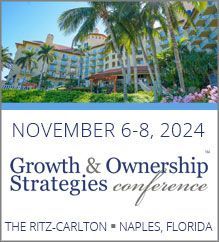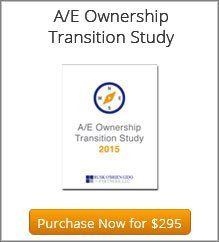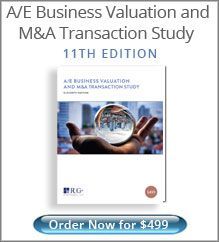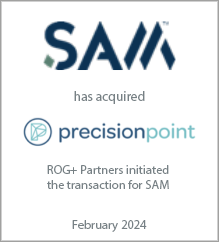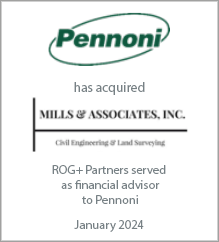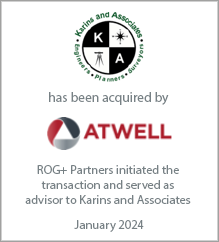Ian has spent the past twenty years working with hundreds of architecture, engineering and environmental consulting firms large and small throughout the U.S. and abroad with a focus on ownership planning, business valuation, ESOP advisory services, mergers & acquisitions, and strategic planning. Ian is a professionally trained and accredited business appraiser and holds the Accredited Senior Appraiser (ASA) designation with the American Society of Appraisers and is a certified merger & acquisition advisor (CM&AA) with the Alliance of Merger & Acquisition Advisors.
An Argument for Annual Valuations
An Argument for Annual Valuations
April 6, 2011
About ten years ago I worked with a national A/E firm to overhaul its stock ownership program and expand its shareholder group from four or five folks to over 20. In most respects it was a typical ownership planning engagement. We worked in concert with the firm’s accountants and lawyers, and eventually rolled out an offering to the new shareholder group that was enthusiastically received.
However, among the firm’s advisors, not everyone was enthusiastic about the expansion of ownership. In particular, I recall the firm’s attorney remarking, “Great, we now have 15 more potential minority interest shareholder lawsuits.” At the time his comment struck me as cynicism, but since then I’ve come to appreciate that he was correct to point out the risks and responsibilities that come with widely distributed ownership.
Some Industry Perspective
There are over 50,000 firms in the A/E industry (counting only firms with taxable payrolls). All but a handful of these firms are privately held by their management and employees, sometimes through an employee stock ownership plan (ESOP), but more frequently through direct share ownership. In the latter case, firms will typically have a shareholder agreement governing how shares are bought and sold, including how the shares are valued.
Often for convenience and cost considerations, such firms will use a stock valuation formula designed to approximate the firm’s fair market value. I’ve seen a huge variety of stock valuation formulas (some better than others) and designed more than a few myself, and I can tell you that even the most thoughtfully designed stock valuation formula can occasionally produce errant results. This is a risk that needs to be managed just as you would manage risk in other aspects of your business.
Mitigating Your Risk
The larger the firm and the more distributed its ownership, the greater the risk. Such firms must take more care in administering their ownership plans, particularly when it comes to establishing their share price. The odds of a shareholder dispute increase with the size of the ownership group and the value of the firm. Management is more exposed to this risk when it relies on internally administered (and sometimes internally developed) stock valuation formulas.
If someone were to ask you, “How was the company’s stock valuation formula developed and why do you believe it produces a reasonable estimate of fair market value?” Could you answer the question? If you DO use a formula, hopefully it was developed based on an independent valuation analysis, and thoroughly tested to reduce the risk of errant results. We recommend that firms using stock valuation formulas re-validate them every three to five years using a qualified business appraiser to test the formula and compare their results to their own assessment of the firm’s fair market value. But even if you do all this, you still face greater exposure by employing a valuation formula as opposed to engaging a qualified and independent appraiser to establish your share price each year.
It’s not uncommon for formulas or calculations of value to be rejected by courts. In a recent ruling in an Iowa Appellate Court case a value calculation employed by a firm’s outside CPA was rejected because the CPA had failed to exercise judgment—ignoring a variety of factors that should have impacted the firm’s value.
This decision speaks to the fundamental weakness of stock valuation formulas. By definition, a formula does not allow for consideration of factors outside the formula inputs, or the exercise of judgment. On the other hand, a qualified and experienced business appraiser will always look beyond the numbers and consider factors such as:
Statutory requirements aside, there’s a good reason that qualified plans such as ESOPs require that the sponsoring company’s stock be appraised by a qualified and independent third-party. The ESOP trustees and/or its independent fiduciaries have a responsibility to make sure that the plan pays no more than fair market value for the sponsoring company’s shares. And the only way to properly assess fair market value of a privately held firm is through an independent appraisal.
A good valuation report will thoroughly examine all the issues that potentially contribute to or detract from a firm’s value. It will document the valuation methodologies used, describe the basis for underlying assumptions, and cite the sources of information used. In short, it should stand up to the closest scrutiny.
Conclusion
Unfortunately, minority interest shareholder disputes do occur from time to time in the A/E industry. We know this well, having served as expert witnesses in such cases. The risk for a firm is that once a court has rejected its valuation methodology, the door is wide open for opposing experts to “duke it out” and one can never know what the outcome will be.
To mitigate this risk, larger firms with widely distributed ownership would be well-advised to follow the same approach to valuation that ESOP companies do—engaging a qualified and independent appraiser to develop a valuation report each year. While there is an incremental cost to this approach, when considered in the context of the risks, it’s an easy call.
However, among the firm’s advisors, not everyone was enthusiastic about the expansion of ownership. In particular, I recall the firm’s attorney remarking, “Great, we now have 15 more potential minority interest shareholder lawsuits.” At the time his comment struck me as cynicism, but since then I’ve come to appreciate that he was correct to point out the risks and responsibilities that come with widely distributed ownership.
Some Industry Perspective
There are over 50,000 firms in the A/E industry (counting only firms with taxable payrolls). All but a handful of these firms are privately held by their management and employees, sometimes through an employee stock ownership plan (ESOP), but more frequently through direct share ownership. In the latter case, firms will typically have a shareholder agreement governing how shares are bought and sold, including how the shares are valued.
Often for convenience and cost considerations, such firms will use a stock valuation formula designed to approximate the firm’s fair market value. I’ve seen a huge variety of stock valuation formulas (some better than others) and designed more than a few myself, and I can tell you that even the most thoughtfully designed stock valuation formula can occasionally produce errant results. This is a risk that needs to be managed just as you would manage risk in other aspects of your business.
Mitigating Your Risk
The larger the firm and the more distributed its ownership, the greater the risk. Such firms must take more care in administering their ownership plans, particularly when it comes to establishing their share price. The odds of a shareholder dispute increase with the size of the ownership group and the value of the firm. Management is more exposed to this risk when it relies on internally administered (and sometimes internally developed) stock valuation formulas.
If someone were to ask you, “How was the company’s stock valuation formula developed and why do you believe it produces a reasonable estimate of fair market value?” Could you answer the question? If you DO use a formula, hopefully it was developed based on an independent valuation analysis, and thoroughly tested to reduce the risk of errant results. We recommend that firms using stock valuation formulas re-validate them every three to five years using a qualified business appraiser to test the formula and compare their results to their own assessment of the firm’s fair market value. But even if you do all this, you still face greater exposure by employing a valuation formula as opposed to engaging a qualified and independent appraiser to establish your share price each year.
It’s not uncommon for formulas or calculations of value to be rejected by courts. In a recent ruling in an Iowa Appellate Court case a value calculation employed by a firm’s outside CPA was rejected because the CPA had failed to exercise judgment—ignoring a variety of factors that should have impacted the firm’s value.
This decision speaks to the fundamental weakness of stock valuation formulas. By definition, a formula does not allow for consideration of factors outside the formula inputs, or the exercise of judgment. On the other hand, a qualified and experienced business appraiser will always look beyond the numbers and consider factors such as:
- The competency and depth of the management team
- Concentration vs. diversity of revenue sources
- Economic and industry conditions and trends
- Project backlog and other forward indicators
- Bad debt write offs and insurance claims history
- Financial performance and condition including peer comparisons
- The competitive environment in which the firm operates
Statutory requirements aside, there’s a good reason that qualified plans such as ESOPs require that the sponsoring company’s stock be appraised by a qualified and independent third-party. The ESOP trustees and/or its independent fiduciaries have a responsibility to make sure that the plan pays no more than fair market value for the sponsoring company’s shares. And the only way to properly assess fair market value of a privately held firm is through an independent appraisal.
A good valuation report will thoroughly examine all the issues that potentially contribute to or detract from a firm’s value. It will document the valuation methodologies used, describe the basis for underlying assumptions, and cite the sources of information used. In short, it should stand up to the closest scrutiny.
Conclusion
Unfortunately, minority interest shareholder disputes do occur from time to time in the A/E industry. We know this well, having served as expert witnesses in such cases. The risk for a firm is that once a court has rejected its valuation methodology, the door is wide open for opposing experts to “duke it out” and one can never know what the outcome will be.
To mitigate this risk, larger firms with widely distributed ownership would be well-advised to follow the same approach to valuation that ESOP companies do—engaging a qualified and independent appraiser to develop a valuation report each year. While there is an incremental cost to this approach, when considered in the context of the risks, it’s an easy call.
Latest Perspective
Perfecting the A/E Exit Strategy – Five Key Factors
An enormous A/E generation that kicked off their careers in the 1980s and subsequently started firms or became owners in the 1990s ...
© 2024
Rusk O'Brien Gido + Partners, LLC
Financial Experts for Architects, Engineers, and Environmental Consulting Firms


